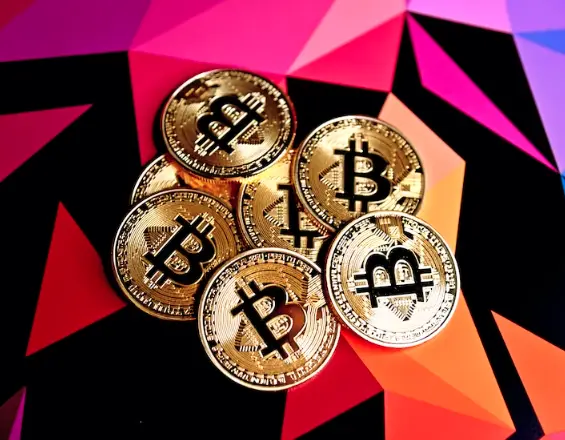As some of you may already know, one of Bitcoin’s defining features is its limited coin supply. Bitcoin’s creator, the mysterious and elusive Satoshi Nakamoto, set a predetermined hard cap of 21 million coins when he designed the crypto, as a way to ensure scarcity and drive demand and price up over time.
This means that all mining will cease once Bitcoin reaches its limit and no new coins will be released into circulation. Until we reach that point, Bitcoin is subjected to the rules of halving, which cuts the reward for mining new blocks in half every 210,000 blocks or roughly every four years, thus reducing the rate at which new coins are created.

At the moment, there are approximately 19 million BTC in existence, leaving less than 2 million to be mined in the years to come. In this context, a lot of analysts focus their attention on the remaining coins and busy themselves with speculations regarding how demand and supply dynamics might affect Bitcoin in the future and influence the behavior of traders and investors as we’re approaching the hard cap. However, it’s also worth taking a look at what’s happening with the current Bitcoin supply and assessing the general pulse of the market.
Bitcoin Holding on the rise
A recent analysis conducted by on-chain analytics provider Glassnode, reveals that over 50% of the existing Bitcoin supply is inactive. Bitcoin HODLing – a term that originated from the misspelling of the verb hold, referring to buying and holding of crypto assets, which eventually has come to mean hold on for dear life – has always been a popular strategy among investors. However, the HODLing trend seems to have spiked recently, as the percentage of Bitcoin supply that has not been touched for over two years jumped from 45% to a new all-time high of 53%.
This suggests that those who added BTC to their wallets or investment portfolios over two years ago are not eager to sell their assets. It’s not exactly surprising that people are not rushing to sell their Bitcoin holdings given the current state of the market, with the crypto winter hovering over the industry and coin values still a far cry from their prior highs. It’s pretty obvious that now is not the best time to sell, as Bitcoin has lost more than 60% of its value over the past year, so many are waiting for the context to shift in their favor before making a move. Therefore, Bitcoin owners’ approach is very much in line with the normal user behavior during bear markets when trading volume tends to slow down.
Anthony Pompliano, an American entrepreneur, investor and one of the most respected figures in the crypto space, took to Twitter to talk about the data provided by Glassnode’s report highlighting the prevalence of Bitcoin holding. In one of his recent posts, Pompliano pointed out that more than 1 out of every 2 Bitcoin in circulation has not been traded in the last 2 years.
Taking the analysis further, Pompliano also noted that 29% of Bitcoin’s circulating supply has been dormant for the past five years. That translates into over $150 billion in market cap that has been sitting in their owner’s accounts for nearly half a decade. What’s more, according to Glassnode, almost 15% of all Bitcoin has remained inactive for the past decade.
As Pompliano explains, this means there are over 2.7 million BTC that are not accessible at the moment for various reasons. It might be because they are kept safe by investors who are probably waiting to sell when prices reach a breakeven point. However, chances are that a large part of these assets is either lost or forgotten, so they’ll probably never re enter circulation.
Glassnode also revealed that the number of non-zero Bitcoin addresses has recently surpassed 45 million, indicating that on-chain activity is taking a turn for the better. Also, the number of addresses with a balance of one or more BTC is getting close to one million.
Prospects for the future
It’s likely that the holding and accumulation trend will continue until the crypto winter finally subsides. Unfortunately, no one can tell for sure when that moment will come. If we take a look at the latest developments in the market and the price evolution over the past few months, we have reasons to hope that the worst is already behind us.
However, the experience of previous bear markets has taught us that the road to recovery is usually long and it will take more than just a few months for the market to get back on track, let alone reach previous all-time highs.
But if you insist on focusing on the bright side, the fact that we’re getting closer to the next Bitcoin halving might bring good news. Bitcoin’s price history reveals that prices usually start to rally about one year and a half before the next halving. With the next halving event expected to occur around April or May 2024, it’s possible for the Bitcoin price to appreciate from this point on.
So, if selling Bitcoin might not be a good idea at the moment, purchasing BTC could be an option worth considering. Investing in a leading coin during a bear market when the prices are low is often a smart investment that could lead to considerable profits once the next bull market arrives.
Of course, there’s no guarantee that Bitcoin’s price will follow the same trajectory as in the past. As with all digital assets, investing in Bitcoin comes with a fair share of risks, so one has to be cautious and take into account market volatility before making such a decision.
Nevertheless, analysts seem to be quite optimistic about Bitcoin’s potential to bounce back from the latest bear market, as it did so many times before. Until then, doing proper research and keeping a close eye on the trends is the best thing one could do as a trader or investor.
Join 25,000+ smart readers—don’t miss out!







